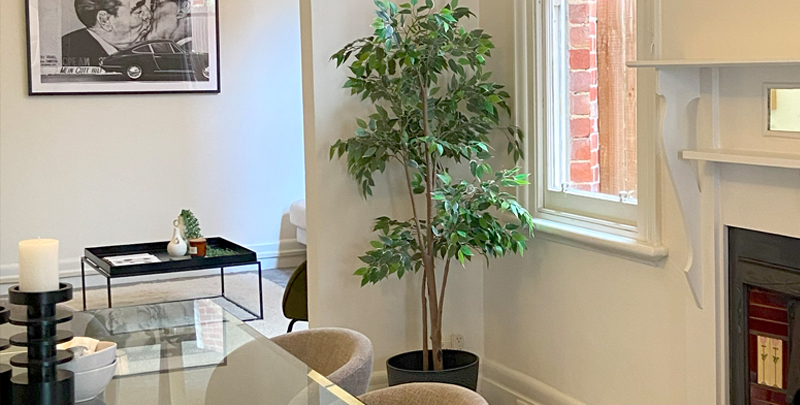by Jordan Telfer with guest Francesca Gulluni


Effective property management goes far beyond simply relaying messages between renters and owners. Proactive management, strategic negotiation and thoughtful maintenance can significantly boost investment property returns.
Francesca Gulluni is an experienced property manager at Nelson Alexander with nearly nine years of experience in the North, North-East and North-West suburbs of Melbourne. She manages around 110 properties, while also leading a team.
I regularly catch up with Fran over the phone and attend property inspections, and rarely leave without gaining some insightful perspective – whether it’s about upcoming changes to residential tenancy legislation or Fran’s innovative management approaches.
Property management is often misunderstood as a simple intermediary role. While negotiation skills are expected from selling agents, property managers aren’t always viewed in the same light. Many owners see them merely as conduits for information rather than strategic advisors.
However, skilled property managers add significant value through strategic advice, negotiation expertise, and proactive planning. By tailoring lease terms, recommending timely upgrades, and applying market insights, they can substantially enhance both rental returns and long-term capital value – transforming from simple go-betweens to trusted advisors who meaningfully impact investment outcomes.
In this conversation I spoke to Fran about the often-under appreciated role of property managers and the tangible ways they can add value to investment properties.
The art of the increase: Balancing higher returns with renter satisfaction
Jordan: How do you approach negotiating rent increases to balance renter retention with maximising returns? I often see property managers being quite timid with increases, suggesting just $5-10 a week with vague justifications based on properties that aren’t truly comparable. There seems to be a middle ground between setting rents too high and leaving money on the table – how do you navigate this balance?
Fran: Finding the right balance is crucial. For long-term renters who maintain properties well, I often recommend setting rents slightly below market rates.This approach avoids vacancy costs and fosters loyalty while still achieving reasonable increases.
We use comparable properties as evidence for adjustments and ensure renters see we’re being fair. Sometimes, using tools like the Consumer Price Index (CPI) or Metropolitan Price Index can be more effective than relying solely on market trends, particularly if the market doesn’t show the increase we believe is appropriate for the property.
If a property is too far below market value – which happened frequently during COVID when we had to decrease rents – you don’t want to suddenly hit renters with a $50-70-80 increase. Incremental increases each year keep the property at an appropriate rental level while maintaining good relationships with quality renters.
Strategic lease timing: Moving beyond the 12-month default
Jordan: Lease structuring is another area where strategic thinking can add value. Can you explain your approach? I’ve always been interested in how the standard 12-month lease isn’t always the best option, particularly when thinking about aligning lease end dates with high-demand rental periods.
Fran: Standard 12-month leases don’t always make sense. For example, if a lease starts in December or January – typically slower rental periods – I might recommend extending it to 14 months so it aligns with busier seasons like February or March. This minimises vacancy risks and ensures better returns for owners.
We’ve found January, February, and March are consistently our busiest times of year, along with October and November when people want to secure properties before Christmas. By strategically timing lease expirations to coincide with these high-demand periods, we can reduce vacancy times and potentially achieve higher rents.
Interestingly, we’re finding more renters asking for two-year leases upfront. While we generally prefer starting with a 12-month lease to see how things go, for longer leases we would build in an agreed rent increase at the 12-month mark to ensure the property keeps pace with the market.
Turning lease breaks into strategic opportunities
Jordan: How do you handle lease break situations effectively? There are nuances to how it’s handled that can significantly impact an owner’s returns, especially in a market with rising rents.
Fran: Lease breaks present interesting opportunities for negotiation. While legislation limits certain charges, we work with owners to assess whether allowing a renter to leave early could benefit the property.
For example, if market rents have risen significantly since the lease began, we might advise treating it as a standard vacancy rather than a lease break. This is because when handling a lease break, we must advertise at the current rental rate and cannot increase it for the new renter. By treating it as a normal vacancy with 28 days’ notice, we can go to market at an increased rent.
Alternatively, a lease break might provide an ideal opportunity for upgrades that increase rental value or reduce future vacancy periods. It’s about thinking strategically for the best long-term outcome rather than focusing solely on the immediate situation.
The stitch-in-time strategy: How small repairs and upgrades prevent major expenses
Jordan: Preventative maintenance is often overlooked. How can this save costs over time? It’s the old ‘stitch in time saves nine,’ and I’ve seen too often during routine inspections that property managers focus on minor issues like dishes in the sink rather than spotting bigger potential problems like leaf build-up in gutters that could cause thousands in water damage.
Fran: Small repairs can prevent major problems later.
I encourage owners, particularly those who are local, to attend final, bond inspections when a renter vacates. This provides an opportunity to assess what maintenance might be needed – perhaps shabby blinds need replacing, weatherboards are starting to rot, or gutters are rusting.
Even simple tasks like servicing split-system air conditioners every 12-24 months can significantly extend their lifespan. Spending $350 on maintenance could keep a unit running efficiently for another decade or longer.
External work is particularly important for weatherboard properties, which I manage many of. Timely touch-ups and repairs can prevent water damage and save owners from the much greater expense of complete repainting or structural repairs later on.
Take home message
Though individual strategies like a modest $10 weekly rent increase or addressing minor maintenance issues may seem inconsequential on their own, cumulatively they create substantial long-term benefits for property owners.
The most skilled property managers look beyond day-to-day operations to provide strategic advice that serves owners’ long-term interests, and substantially enhances both rental returns and capital value.
Listen to Jordan’s podcast:

